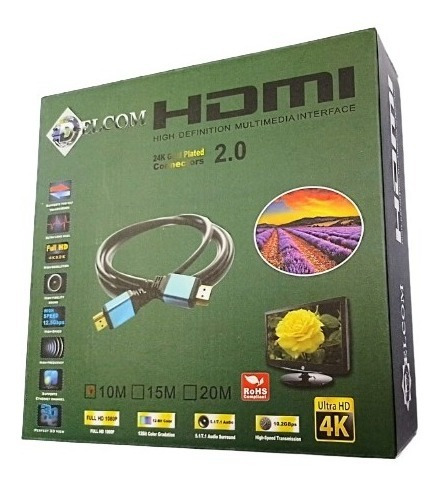
Originally designed for HD TVs, HDMI is now supported by almost any home audio/video device, including computers, home theater systems, game consoles, etc. Longer cables exist, but the maximum resolution and refresh rate may decrease with longer cables. DisplayPort, on the other hand, has a maximum length of about 10' according to the official standard. Using active cables, or other transmission methods, like HDMI over HDBaseT, makes it possible to run HDMI cables for over 300'.
#HDMI VERSIONS 1080P#
Standard HDMI cables are available in lengths exceeding 100' for 1080p signals, or 30' for 4k signals.
#HDMI VERSIONS PC#
If you're looking to connect a PC with an AMD graphics card, or an Xbox, you'll be looking for a display that supports FreeSync. With two different mainstream VRR technologies on the market, it's important that your choice of connector match your needs. Winner: DisplayPort Variable Refresh Rate (VRR) This still requires a DisplayPort connection on the source device.
:max_bytes(150000):strip_icc()/hdmi-connectors-hdmi-org-bbb-854ba3263c064e5db86061ab3da5c208.jpg)
HDMI doesn't natively support MST, but it's possible to achieve similar results using DisplayPort to HDMI hubs. This device chaining can be done either from one display to another, a technique known as 'daisy-chaining', or through an external hub. Although the total bandwidth can't exceed the maximum bandwidth of the port you're using, in theory, this technology allows you to run up to 63 separate displays on a single port. Winner: HDMI, for now Multi-Stream Transport (MST)įirst introduced with DisplayPort 1.2, Multi-Stream Transport, or MST, allows you to connect multiple displays to a single DisplayPort connection on your computer. As of writing, though, there's no hardware that supports DisplayPort 2.0, and due to global delays, we likely won't see any until late 2021 at least. This would theoretically make it possible to achieve resolutions of up to 16k with compression or lower resolutions with much higher refresh rates than is currently possible.

DisplayPort 2.0 has also been announced, and it has an even higher maximum bandwidth than HDMI 2.1 at nearly triple the bandwidth of DisplayPort 1.4. Compared to standard HDMI 2.0, DisplayPort 1.4 is superior. Expect that to change soon, though, as a number of manufacturers announced HDMI 2.1 monitors at CES 2021. HDMI is technically superior thanks to the release of HDMI 2.1, which surpasses the capabilities of DisplayPort 1.4, but monitors that support it are scarce. While the exact specifications vary depending on a few other factors, below is a list of the approximate maximum formats each connector can support. Most monitors on the market today support either DisplayPort 1.2 or 1.4 and/or HDMI 1.4 or 2.0.

The maximum resolution and refresh rate available depends on the specific versions of DisplayPort and HDMI available to you. Each has its own advantages depending on how you plan to use it. HDMI and DisplayPort were designed for different uses, so they support different technologies.


 0 kommentar(er)
0 kommentar(er)
